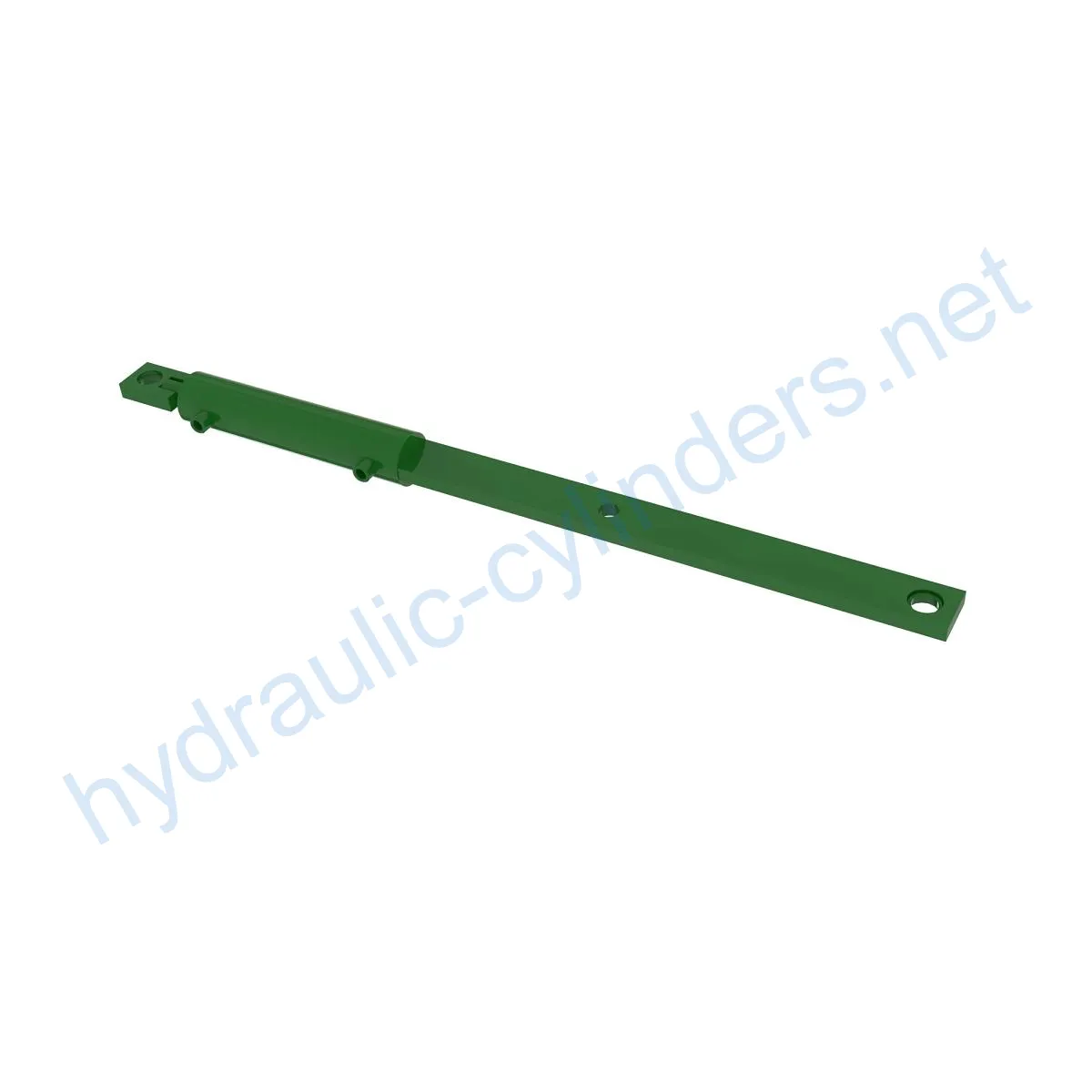Replacement Of AHC15254 Tilt Hydraulic Cylinder
Som en af producenterne, leverandørerne og eksportørerne af mekaniske produkter tilbyder vi hydrauliske cylindre og mange andre produkter.
Kontakt os for yderligere oplysninger.
Mail:sales@hydraulic-cylinders.net
Producent, leverandør og eksportør af hydrauliske cylindre.
Replacement Of AHC15254 Tilt Hydraulic Cylinder
First, let’s introduce the product and define what this hydraulic cylinder is and its purpose. The Replacement Of AHC15254 Tilt Hydraulic Cylinder is a component used in various machinery to control tilt functions. It plays a crucial role in ensuring smooth and precise movement of the equipment.
Specifications and Model
This replacement hydraulic cylinder has the following specifications:
- Weight: 19.42 lb
- Height: 2.5 in
- Width: 3.4 in
- Length: 38.9 in
It is compatible with the W235 and W260 machine models.
Features
- Improved Equipment Performance: Replacing damaged or worn-out hydraulic cylinders can restore the equipment’s normal operational capabilities, ensuring optimal performance in various applications.
- Enhanced Safety: Regularly replacing hydraulic cylinders reduces safety hazards associated with cylinder failures, ensuring the safety of operators and the equipment.
- Overload Protection: New cylinder designs often incorporate better overload protection mechanisms, enhancing overall safety.
- Quick Installation: Modern hydraulic cylinders are designed for easy installation and replacement, minimizing downtime.
- Standardized Components: Many hydraulic cylinders are standardized products, making it easy to obtain replacement parts in the market.
We specialize in manufacturing hydraulic cylinders that can perfectly replace these models. Our products are designed to meet or exceed the specifications of the original cylinders.
Applications
This hydraulic cylinder is used in various applications, including:
Excavators
In excavators, the hydraulic cylinder may get damaged due to prolonged use or overloading in the arm or bucket. Replacing it is essential to restore normal operation.
Cranes
The boom hydraulic cylinder in cranes is prone to wear during frequent lifting and lowering operations. Regular replacement is necessary to ensure safety.
Tractors
The front-end loader hydraulic cylinder in tractors may experience leakage or performance degradation due to continuous lifting and tilting operations. Replacement is needed to maintain optimal performance.
Harvesters
During harvesting, the hydraulic system operates under high pressure, and cylinders can suffer from fatigue. Timely replacement is crucial to maintain efficiency.
Automated Production Lines
Hydraulic cylinders are used to control robotic arms and other automated equipment. Any cylinder failure can significantly impact production efficiency, requiring immediate replacement.
Die-Casting Machines
In high-pressure and high-temperature environments, hydraulic cylinders in die-casting machines may experience performance degradation. Regular replacement ensures consistent product quality.
Mining Equipment
Hydraulic cylinders are used for lifting and moving heavy loads in mining equipment. Due to harsh working conditions, regular inspections and replacement are necessary to avoid equipment failure.
Bulldozers
Worn hydraulic cylinders on the bulldozer’s blade arm can result in decreased pushing capacity. Timely replacement is essential to maintain operational efficiency.
Maintenance Tasks
Regular maintenance tasks for hydraulic cylinders include:
- Periodic Inspection
- Proper Lubrication
- Seal Replacement
- Calibration Check
It is crucial to emphasize the importance of correct installation, lubrication, and adjustment. Providing proper guidance for aligning the cylinder during installation and recommending the use of suitable mounting brackets to secure the cylinder can greatly enhance its lifespan.
We offer inspection, repair, and replacement services, ensuring the longevity of the hydraulic cylinders.
Safety Considerations and Environmental Factors
When working with hydraulic cylinders, it is essential to prioritize safety measures. Proper use of safety precautions, such as wearing protective gear, following recommended procedures, and adhering to manufacturer guidelines, is crucial to prevent accidents and injuries.
Troubleshooting and Common Issues
Common issues and possible solutions related to hydraulic cylinders include:
Leakage
If a hydraulic cylinder is leaking, it may indicate a damaged seal. Replacing the seal and ensuring proper installation can resolve the issue.
Slow Operation
Slow operation might be due to insufficient lubrication or a malfunctioning valve. Properly lubricating the cylinder and checking the valve can help address this problem.
Jerky Movement
Jerky movement can be caused by air in the hydraulic system or an issue with the control valve. Bleeding the system and inspecting the valve can help rectify this issue.
Preventive Measures
To minimize potential problems, it is recommended to follow these preventive measures:
- Regularly inspect hydraulic cylinders for signs of wear or damage.
- Ensure proper lubrication according to manufacturer guidelines.
- Replace worn seals and other components at recommended intervals.
By following these measures, potential issues can be reduced, prolonging the lifespan of the hydraulic cylinders.

Design Considerations and Selection Criteria
When designing and selecting hydraulic cylinders, several factors should be considered:
Load-Bearing Capacity
The hydraulic cylinder must be selected based on its ability to handle the intended load. It should have sufficient strength to withstand the forces exerted on it.
Sealing and Durability
Choosing appropriate seals and durable materials like polyurethane and nitrile rubber ensures longevity and resistance to wear.
Safety and Maintenance
Consideration should be given to the safety features incorporated into the design, as well as ease of maintenance and repair.
Sealing and Lubrication
Hydraulic cylinders utilize various sealing components, such as piston seals and rod seals. These seals are made from wear-resistant materials like polyurethane and nitrile rubber. The cylinder body and threaded end surfaces are finely treated to enhance wear resistance.
Proper lubrication is essential to ensure smooth operation and prevent premature wear. Regular addition of the appropriate amount of hydraulic oil helps maintain optimal performance.
Regular Inspection and Preventive Maintenance
Regular inspection and preventive maintenance tasks include:
- Periodic inspection to identify signs of wear or damage.
- Proper lubrication according to manufacturer recommendations.
- Seal replacement at recommended intervals.
- Calibration checks to ensure precise operation.
Providing an accurate installation guide, aligning the cylinder correctly during installation, recommending suitable mounting brackets, and suggesting inspection, repair, and replacement procedures all contribute to extending the lifespan of the hydraulic cylinders.
Installation Guide
Take a Tour of Our VR Factory:
Take a tour of our VR factory with the following
Hydraulic Cylinder Application:


